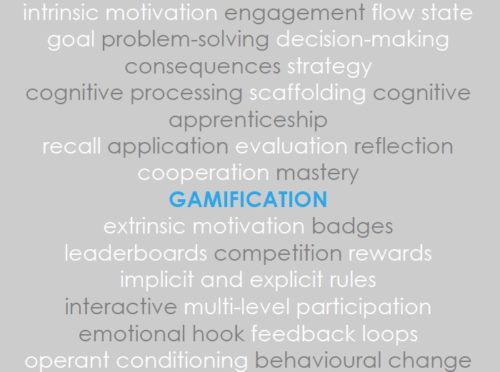E-learning has been around for a long time but in recent years there has been a surge of interest and uptake due to widespread wi-fi access and the availability of more user-friendly software for developing and delivering courses.
Types of e-learning
E-learning can be divided into synchronous and asynchronous learning. Although both are accessed online, synchronous learning requires all learners to participate in real time, while asynchronous learning can be accessed at anytime by the learners.
Synchronous e-learning
A typical example of synchronous e-learning is where there is a tutor who interacts with participants in real time, using video in the virtual classroom. It may also include peer interaction for the participants.
There are a number of advantages and disadvantages to a synchronous approach. One of the advantages is that it reflects some features of face-to-face such as immediate feedback and the opportunity to adapt on the fly according to the learners’ needs.
Clearly, one of the disadvantages of synchronous learning is the need for the facilitator and learners to participate in real time. This lack of flexibility is a problem when the learners are in different international time zones and have work and family commitments.
Asynchronous e-learning
Asynchronous e-learning, on the other hand, provides a more flexible solution for busy adult learners in different locations. Courses can stand alone as self-guided courses or they can be instructor-led whereby they are delivered unit by unit with an online tutor who monitors and, in some cases, contributes to discussion forums.
Such asynchronous courses can support learners in diverse settings. They can provide useful training solutions in the business context with large groups of people when face-to-face training is not feasible. For example, soft skills, compliance training and software training can be provided through asynchronous e-learning programmes. In the educational and academic contexts, asynchronous e-learning has opened up opportunities for learning in locations where there has been lack of access for a variety of reasons. Massive Online Open Courses (MOOCS) are providing opportunities in which learners can interact with teachers and students around the globe through discussion forums that form part of some free e-courses.
Why adopt e-learning?
Quality face-to-face teaching and learning can be a costly business so it is important that the time given to face-to-face is utilized for kinds of learning that benefit most from this method, particularly the application of more open-ended tasks requiring personalised feedback. However, a lot of pre-requisite knowledge and skills required for such tasks can be covered through e-learning courses that include the use of monitoring and assessment tools. Blended learning is often preferred because, if it is done well, it can combine the best of face-to-face and e-learning.
Conclusion
E-learning seems to be opening up more opportunities for learning. But to what extent can e-learning enhance the quality of teaching and learning and what are the implications for course design? These are some of the issues to be explored in future blog postings. Although it is only possible to touch on a few of the benefits and limitations of e-learning here, views differ widely on its effectiveness, depending on the perspective from which it is experienced. So, what do learners, teachers and developers consider to be the pros and cons of e-learning?



